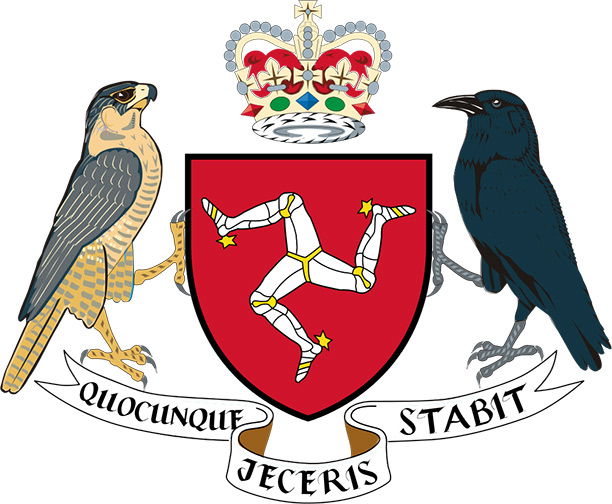The Isle of Man's Path to Autonomy
Scots need not look far to find a successful example of ‘devo-max’.
 Next summer sees the 250th anniversary of the purchase by the British Crown of the royalties held by the Lord of Man. This ‘Revestment’ could have spelt the end of the ancient kingdom of Man. As British soldiers raised their flag over Douglas in July 1765, the prospects for the survival of the Isle of Man as a separate territory looked bleak. In fact, Revestment paved the way for increasing autonomy throughout the 19th and 20th centuries.
Next summer sees the 250th anniversary of the purchase by the British Crown of the royalties held by the Lord of Man. This ‘Revestment’ could have spelt the end of the ancient kingdom of Man. As British soldiers raised their flag over Douglas in July 1765, the prospects for the survival of the Isle of Man as a separate territory looked bleak. In fact, Revestment paved the way for increasing autonomy throughout the 19th and 20th centuries.
The Isle of Man is equidistant between England, Scotland, Wales and Ireland. Following a turbulent period, switching from the Scots to the English and back again as a spoil of war, the Isle of Man passed into the dominions of the English Crown at the end of the 14th century. It did not thereby become part of England. Instead it was a feudatory kingdom, where a powerful English noble held it, initially as ‘King’, but from 1504 as the more politic ‘Lord’. The Lords of Man were the monarchs of the island, with obligations to their feudal overlord, the English, later British, Crown. These obligations gave the overlord authority to legislate on matters of defence. The internal affairs of the island were, however, principally the business of the Lord of Man.
For much of its history the Isle of Man was an impoverished rural community. In the 18th century, however, it enjoyed an economic boom, exemplified by Manx figures such as George Moore. Some, such as the customs officers of Dublin, categorised much of this business as ‘the contraband trade’. Goods were being landed on British shores without payment of British taxes. In order to suppress the trade, the British began to negotiate with the Lord of Man for the purchase of his ‘royalties’ by the Crown.
The Isle of Man had seen a change in rulers before, but this was recognised as more significant. A contemporary poem feared that the Manx would be loaded ‘with English taxes … Yet they pretend to make us their fast allies by joining the Isle of Man to Cumberland’s black coast’.
Following the passage of an Act of Parliament to purchase the royalties from the Lord of Man, on July 11th, 1765 the Manx flag was lowered and a British one raised in its place. There was suppression of the trade and the constitutional distinctiveness of the island was by no means assured. There was – and is – a constitutional argument that a feudal monarchy cannot be held by the overlord, so that the consequence of Revestment was the extinction of the Lordship of Man. The British, however, had purchased the royalties for a specific purpose: the suppression of the trade that damaged Crown revenues. The removal of a noble Lord of Man made exercise of the powers of the overlord less sensitive. But routine governance of the territory could be achieved quickly, and easily, using Manx laws, offices and structures, albeit with a significant change in the personnel. Thus, the Crown had the powers of an overlord, but in practice exercised much of the legislative, executive and judicial authority over the island through the powers of the Lord of Man. The century after Revestment is not characterised by Manx autonomy, but the government from London was largely carried out through Manx mechanisms. There was always the potential for these mechanisms to pass into Manx hands.
This process began in the mid-19th century. A key moment was the reform in 1866 of the House of Keys, one of two chambers in the Manx Tynwald, roughly analogous to the House of Commons. It had become a self-perpetuating oligarchy, where vacancies were filled by the decision of the members rather than an electorate. London agreed to pass tax-raising and spending powers to Manx institutions, subject to a payment to the UK for defence and external affairs, on condition that the Keys reformed to become an elected chamber. Over the next 150 years power was transferred from offices controlled by London to ones responsible to the House of Keys. Today legislative, executive and judicial authority in the Isle of Man is almost entirely in the hands of the Manx. Although devolution is not a common way of expressing the relationship with Britain, the Manx have for some time enjoyed the practical benefits of a Scots-style ‘devo-max’ settlement.
Manx autonomy under a separate feudatory monarch did not survive the imperial turmoil of the 18th century. Unlike the American colonists, the Manx were in no position to resist the exercise of authority from London. But the centuries of governance under an English noble, who regarded the Isle of Man as a family property, had created laws, mechanisms and offices suited to the exercise of governmental power over the island. For a British government whose interest in the island was primarily negative, the appeal of stepping into the place of the Lord of Man, rather than simply abolishing the island’s distinctiveness, is clear. Although in the short-term the practical differences between this and union with ‘Cumberland’s black coast’ may have been comparatively minor, in the longer term the British decision to adopt Manx governance preserved the island’s autonomy.




